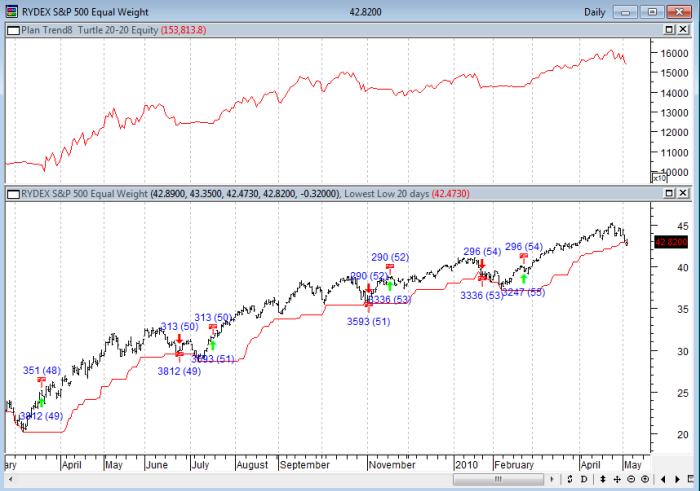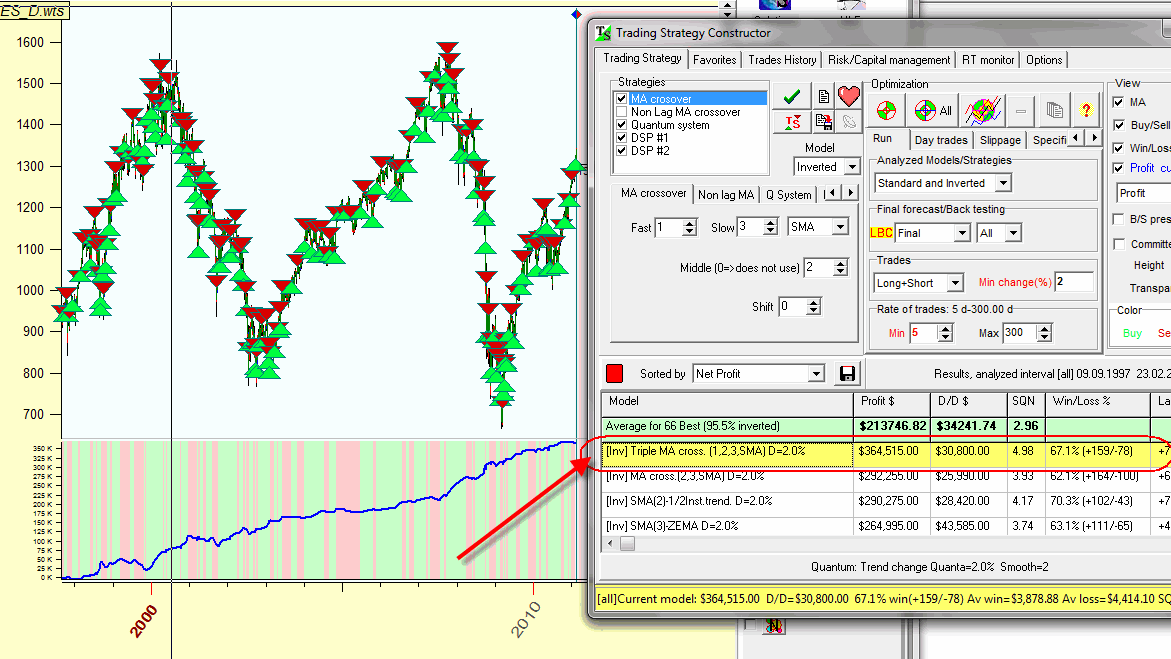Trading Is Timing
Post on: 5 Апрель, 2016 No Comment

Trading always comes down to timing. To truly appreciate this, we simply need to note that one of the biggest gains in stock market history occurred on October 19, 1987, during the day of its greatest crash. On that day, stocks had declined a mind-harrowing 23% by the end of the day, but at around 1:30 p.m. they staged a massive rally that saw the Dow Jones and S&P indexes verticalize off the bottom, rising more than 10% before running out of steam and turning down to end the day on the lows.
While most traders that day lost money, those who bought that bottom at 1:30 p.m. and sold their positions an hour later were rewarded with some of the best short-term gains in stock market history. Conversely, traders unfortunate enough to have shorted at 1:30 p.m. only to cover in panic an hour later held the dubious distinction of losing money on their shorts during the day of stock market’s greatest decline .
If nothing else, the stock market crash of 1987 proved that trading is all about timing. Timing is hard to master, but you can still capture significant gains on an ill-timed trade if you follow a few simple rules.
The Advantage of Avoiding Margin
What happens to traders who are terrible timers? Can traders who are poor timers ever succeed — especially in the currency market where ultra-high leverage and stop driven price action often forces margin calls ?
The answer is yes.
Some of the world’s best traders, including market wizard Jim Rogers, are still able to succeed. Rogers — and his famous short trade in gold — is well worth examining in more detail. In 1980, when gold spiked to record highs on the back of double-digit inflation and geopolitical unrest, Rogers became convinced that market for the yellow metal was becoming manic. He knew that like all parabolic markets, the rise in gold could not continue indefinitely. Unfortunately, as is so often the case with Rogers, he was early to the trade. He shorted gold at around $675 an ounce while the precious metal continued to rise all the way to $800. Most traders would not have been able to withstand such adverse price movement in their position, but Rogers — an astute student of the markets — knew that history was on his side and managed not only to hold on, but also to profit, eventually covering the short near $400 an ounce.
Aside from his keen analytics and a steely resolve, what was the key to Rogers’ success? He used no leverage in his trade. By not employing margin. Rogers never put himself at the mercy of the market and could therefore liquidate his position when he chose to do so rather than when a margin call forced him out of the trade. By not employing leverage on his position, Rogers was not only able to stay in the trade but he was also able to add to it at higher levels, creating a better overall blended price.
Slow and Low is the Way to Go
For currency traders, the Rogers trade in gold holds many lessons. Experienced traders are familiar with being stopped out or margin called from a position that was going their way. What makes trading such a difficult vocation is that timing is very hard to master. By using little or no leverage, Rogers provided himself with a much larger margin for error and, therefore, did not need to be correct to the penny in order to capture massive gains. Currency traders who are unable to accurately time the market would be well advised to follow his strategy and deleverage themselves. Just like the common cooking saying, success in FX trading is based on the idea that ‘slow and low is the way to go’. Namely, traders should enter into their positions slowly, with very small chunks of capital and use only the smallest leverage to initiate a trade.

To better illustrate this point, let’s look at two traders. Both traders start with $10,000 of speculative capital and both feel that the EUR/USD is overvalued and decide to short it at 1.3000. Trader A employs 50:1 leverage, selling $500,000 worth of EUR/USD pair short against the $10,000 of equity in his speculative account. On a standard 1% margin account, Trader A allows himself only 100 points of leeway before he is margin called and forced out of the market. If EUR/USD rallies to 1.3100 Trader A is out with a massive loss. Trader B, on the other hand, uses much more conservative leverage of 5:1 only selling $50,000 EUR/USD short at the 1.3000 level. When the pair rallies to 1.3100 Trader B comes out relatively unscathed, suffering only a minor floating loss of $500. Furthermore, as the pair rallies to 1.3300 he is able to add to his short position and achieve a better blended price of 1.3100. If the pair then finally turns down and simply trades back down to his original entry level, trader B already becomes profitable. Both traders made the same trade. Both were completely wrong on timing, yet the results could not have been more different.
No Stops? Big Problem!
Jim Rogers’ slow and low approach to trading, while clearly successful, suffers from one glaring flaw: it does not use stops. While Rogers’ method of buying value and selling hysteria has worked well over the years, it can very be vulnerable to a catastrophic event that can take prices to unimagined extremes and wipe out even the most conservative trading strategy. That is why currency traders may want to examine the methods of another market wizard, Gary Bielfeldt. This plain-spoken Midwesterner made a fortune trading Treasury bonds in the 1980s when interest rates rose to record yields of 14%.
Gary Bielfeldt went long Treasury bond futures once rates hit those levels, believing that such high rates of interest were economically unsustainable and would not persist. However, much like Jimmy Rogers, Gary Bielfeldt was not a great timer. He initiated his trade with bonds trading at the 63 level but they kept falling, eventually trading all the way down to 56. However, Bielfeldt did not allow his losses to get out of control. He simply took stops every time the position moved a half or one point against him. He was stopped out several times as bonds slowly and painfully carved out a bottom. However, he never wavered in his analysis and continued to execute the same trade despite losing money repeatedly. When bonds prices finally turned, his approach paid off as his longs soared in value and he was able to collect profits far in excess of his accumulated losses.
Gary Bielfeldt’s method of trading holds many lessons for currency traders. Much like Jim Rogers, Bielfeldt is a successful trader who had difficulty timing the market. Instead of nursing losses, however, he would methodically stop himself out. What made him unique was his unwavering confidence in his analysis, which allowed him to enter the same trade over and over again, while many lesser traders quit and walked away from the profit opportunity. Bielfeldt’s probative approach served him well by allowing him to participate in the trade while limiting his losses. This strong combination of discipline and persistence is a great example to currency traders who wish to succeed in trading but are unable to properly time their trades.














